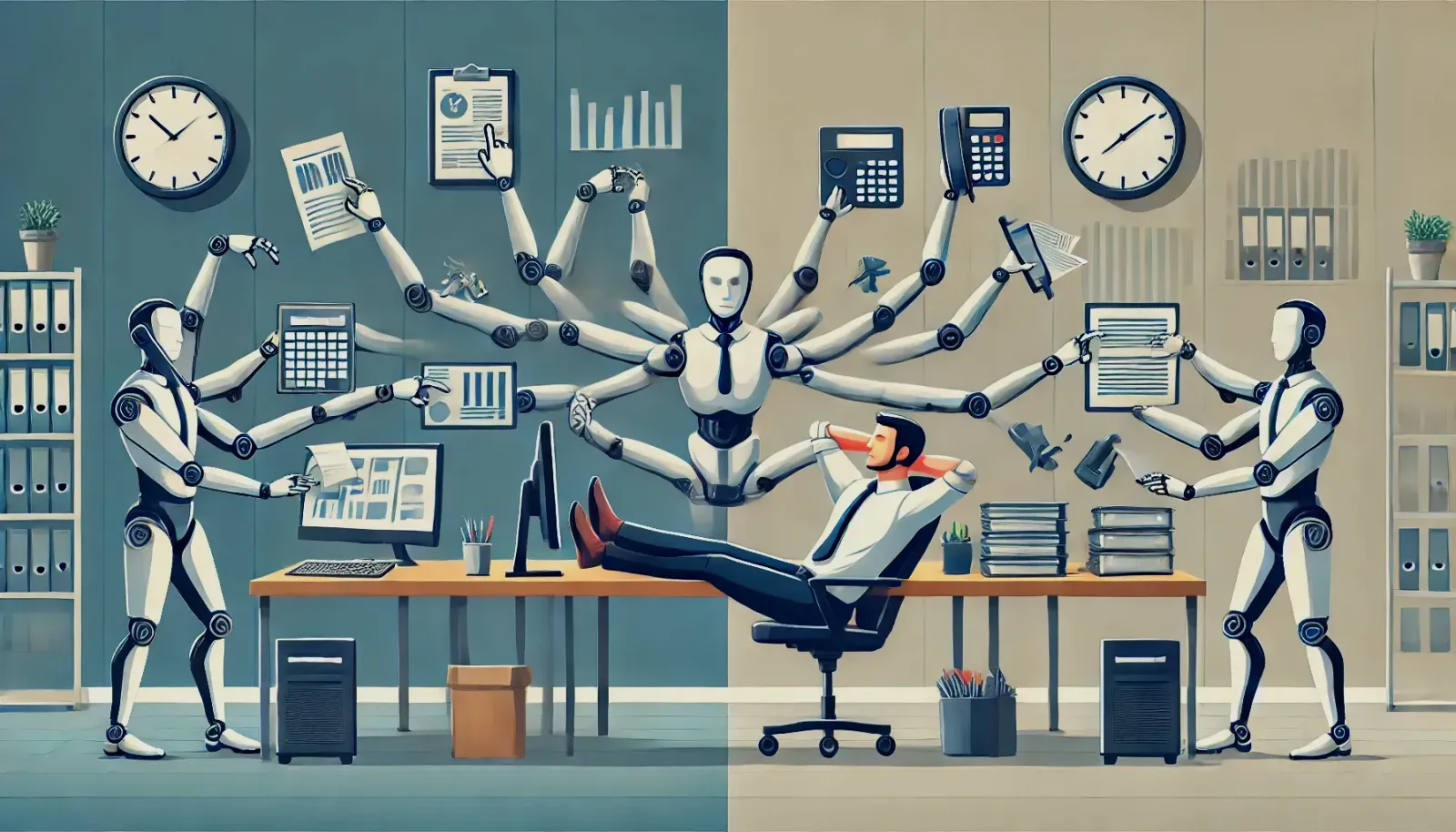The misconception that sophisticated automation solutions are exclusive to individuals with extensive technical or coding expertise is being increasingly challenged.
Recent developments in artificial intelligence (AI) and no-code platforms are democratizing automation, making it accessible to a broader audience. This article examines how AI and no-code tools are transforming workflow automation, enhancing productivity, and fostering an inclusive work environment.
Breaking Down the Misconception
A common myth in AI workflow automation is that coding mastery is a prerequisite. This misconception often deters non-technical professionals from exploring automation solutions. However, emerging data convincingly refutes this belief.
The Myth of Coding Mastery
- Misconception of Exclusivity: The belief that only individuals with extensive programming skills can leverage AI workflow automation tools is widespread but flawed.
- Barrier to Entry: This misconception creates an unnecessary barrier for many professionals who could greatly benefit from automation technologies.
- Skill Gap Worries: Concerns about a steep learning curve associated with traditional coding act as an additional deterrent.
The Reality of No-Code Tools
- User-Friendly Interfaces: No-code AI tools are designed with intuitive interfaces that allow users to create automation workflows through simple drag-and-drop actions.
- Equal Opportunity Technology: These tools give everyone access to sophisticated automation, enabling users from diverse professional backgrounds to optimize their workflows without deep technical knowledge.
- Ease of Integration: No-code platforms facilitate seamless integration with existing business applications, making it easier to automate tasks across different functions.
By shifting the narrative from exclusivity to accessibility, we pave the way for a more diverse and productive workforce. AI and no-code tools empower professionals to automate workflows and enhance productivity, making these technologies versatile and robust across various industries.
Benefits of AI and No-Code Tools
- Increased Efficiency - AI workflow automation significantly boosts efficiency by automating responsibilities that occupy a large portion of employees' time. This allows teams to focus on high-value work that directly impacts organizational goals.
- Minimized Human Errors - AI-driven processes can decrease error rates in tasks like data entry, where human errors can be as high as 4%. This enhances work quality and productivity by reducing the time and resources spent on correcting mistakes.
- Improved Reporting and Data Analytics - AI workflow automation simplifies data collection and analysis, enabling more accurate and insightful reporting. This capability is crucial for assessing business impact and making informed decisions.
- Reduced Costs - By increasing employee productivity and making complex task completion easier, AI workflow automation can reduce operational costs. Automating repetitive tasks reduces the need for time-consuming manual labor, allowing companies to allocate resources more effectively.
Practical Applications and Tools
AI Automated Support Workflows - Companies like Zendesk, Atlassian, and HubSpot use AI-powered chatbots to automate customer support workflows, reducing customer wait times and minimizing the load on human agents.
AI Automated Predictive Maintenance in Manufacturing - General Electric (GE) employs AI workflow automation for predictive maintenance in its industrial machinery, reducing downtime and increasing the lifespan of equipment.
AI Automated Invoice Processing in Finance - Accounts payable departments in companies like IBM have adopted AI automation to streamline invoice processing, speeding up approval processes and minimizing errors.
Some No-Code AI Tools to try out
- AI21 Labs: Offers a suite of AI tools including Jurassic-1 Jumbo, a factual language model, and Jarvis, a creative text-format generation tool.
- Cohere: Provides a variety of pre-trained LLMs for summarization, question answering, and more.
- Kissflow: Known for its user-friendly interface and quick setup, helping in creating and managing workflows efficiently.
- ClickUp: Specializes in automating feedback collection and analysis, aiding in gathering insights about company performance and customer satisfaction.
- Zapier: Connects various apps and automates workflows by setting up triggers and actions, making it easy to integrate and automate processes without coding.
- Make.com (formerly Integromat): Offers advanced workflow automation capabilities with visual tools to connect apps and automate complex processes with minimal technical skills.
Steps to Automate Workflows with AI
- Determine the Needs of Your Organization: Identify areas within your current operations where automation could help.
- Map Out Your Current Workflows: Document each step of your operational processes to highlight inefficiencies and redundancies.
- Evaluate Automation Solutions: Look for platforms that offer flexibility, scalability, and compatibility with your existing systems.
- Start Small and Experiment: Begin by implementing AI automation for a single, well-defined task.
- Monitor and Optimize: Continuously evaluate the performance of AI automation and fine-tune your tools and workflows as needed.
AI workflow automation is a powerful tool for boosting productivity and efficiency across various industries. By automating repetitive tasks, organizations can reduce costs, minimize human errors, and improve reporting and data analytics. The top no-code AI tools offer flexibility and scalability, making it easier for businesses to implement AI automation. By following the outlined steps, organizations can effectively automate workflows and reap the benefits of AI technology.
References
- The Digital Project Manager. (2024, June 13). AI Workflow Automation: 5 Best Practices & Simple Examples.
- Phenom People. (2024, June 24). AI Workflow Automation: What It Is and How to Do It.
- ClickUp. (2024, June 4). How to Use AI Workflow Automation to Boost Productivity.
- iShir. (2024, June 28). How to Boost Your Workflow With AI? Top 6 AI Workflow Automation Tools.






